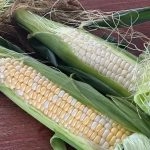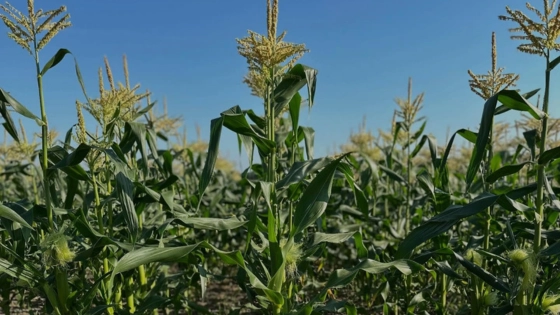 When you see a lush cornfield while driving past a Maryland farm, you might think of the sweet, juicy ears you enjoy at a summer barbecue. You may even think about the adage, “Knee high by the Fourth of July!” But what you might not know is that there’s a good chance the corn you’re picturing isn’t for human consumption at all. In fact, most of the corn grown in the United States is actually field corn, a variety with entirely different uses.
When you see a lush cornfield while driving past a Maryland farm, you might think of the sweet, juicy ears you enjoy at a summer barbecue. You may even think about the adage, “Knee high by the Fourth of July!” But what you might not know is that there’s a good chance the corn you’re picturing isn’t for human consumption at all. In fact, most of the corn grown in the United States is actually field corn, a variety with entirely different uses.
Just ask Kelsey Stabler, a fifth-generation farmer at Pleasant Valley Farm in Brookeville. Her family farms about 2,700 acres, growing sweet corn for their produce market alongside traditional row crops like field corn, soybeans and wheat.
Sweet corn is exactly what it sounds like — the type of tasty corn grown specifically for human consumption. “Sweet corn is grown primarily as a table food,” Kelsey says.
It’s harvested when the kernels are soft and full of moisture, which gives them their signature sweet flavor and tender texture. Because it’s a table food, it faces unique challenges. “Like any table food that is grown, sweet corn attracts bugs and often needs more control to keep bug and disease-free compared to field corn. It’s also very sensitive to water and heat, needing quite a bit of both at exactly the right time to grow,” Kelsey says.
At Pleasant Valley Farm, they grow white, yellow and bicolor varieties. While all are popular, Kelsey says, “all varieties are super sweet and popular, but we sell the most bicolor.” If you’re looking for the best time to enjoy it, she says late July to early August is prime sweet corn season.
Field corn makes up the majority of corn grown in Maryland. In 2023, 440,000 acres were used for field corn crops versus about 8,300 acres for sweet corn. Another difference is that it’s not meant to be eaten directly off the cob or by people at all! “Field corn is not used to eat but will go into production for other things,” she says. “Primarily animal feed and ethanol production.”
The differences are clear even in the field. Field corn is left to grow until the plant and kernels have completely dried out. This process creates the characteristic “dent” in the top of each kernel and makes it suitable for long-term storage and processing.
While the planting process is similar to sweet corn, field corn is generally hardier. “Field corn, while also requiring a lot of input, is generally more resilient than sweet corn and can tolerate drought conditions or cold slightly better. The overall planting process is not that different,” Kelsey says. The biggest difference comes at harvest time. “We pick all of our sweet corn by hand and the field corn is harvested using a large combine machine,” she adds.
Field corn is typically planted in late April and harvested from late September through November. Kelsey chooses from many different varieties based on factors like yield potential, drought resistance, and tolerance to bugs and weeds.
In addition to working alongside three other generations of her family, the most rewarding part of the job for Kelsey is seeing a year’s worth of effort pay off. “I like harvest season when we can see our hard work put into planting and nourishing the plant all year come to fruition at the yield level,” she says.
So, the next time you drive past a cornfield, you’ll know a little more if the corn is sweet — or isn’t.
Hungry for more? Read more if you’re crazy for corn mazes. Learn more about Maryland’s grain farmers.

